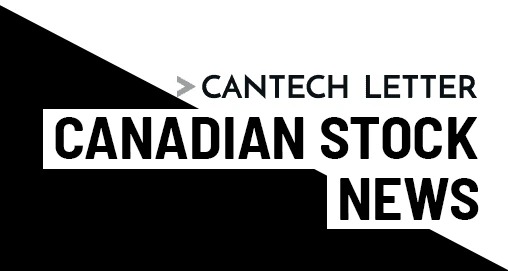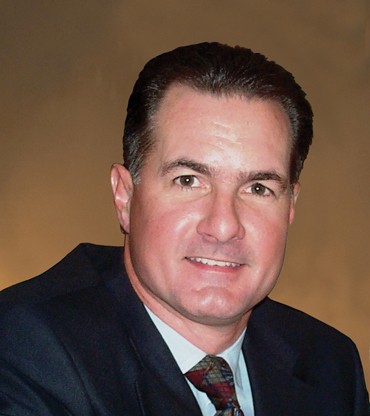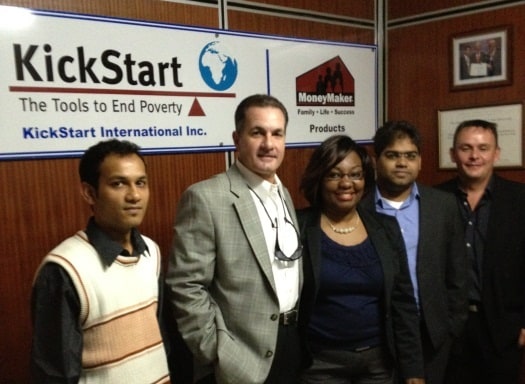

A little digging into the business of Edmonton’s Serenic Corp. (TSXV:SER) reveals some interesting economic trends. Serenic, which makes software that helps international non-profits and NGO’s better manage their resources, appeared poised to benefit from a shift that many hadn’t noticed. As The New York Times reported at the time, the number of charities in the United States rose 60 percent, to 1.1 million, in the decade between 1999 and 2009. In the US, charities now collect nearly a trillion and a half dollars, which is more than the US government collects in income taxes. In Canada, philanthropic donations jumped 127% after a 1996 amendment by the Canada Revenue Agency that ditched the capital gains tax on gifts of securities.
The economic downturn that began in late 2008, however, hit charities especially hard. Midway through 2009, Boston based consulting firm The Bridgespan Group reported that 75% of charities had been hurt by the recession. Newer data suggests long-term trends in charitable giving are now resuming. A study by the Nonprofit Research Collaborative, a coalition of six organizations that study or represent nonprofits and fund raisers, showed that 43 per cent of charitable organizations increased the amount of money they raised in 2010, and 63 per cent of the more than 1,800 organizations studied said they expect private donations to rise in 2011.
Some believe the trend is a demographic one. The Financial Post, recently, described a “a baby boomer approach to philanthropy, with giving starting relatively early in life and being highly attuned to final outcomes.” This trend no doubt gained steam with the “Giving Pledge” an initiative by Bill Gates and Warren Buffett to convince the world’s billionaires to give most of their wealth to charity within their lifetimes. By 2010, half of the billionaires the pair had contacted agreed to pledge more than half of their wealth. The list of names includes George Lucas, Ted Turner, T Boone Pickens, Michael Bloomberg, Barry Diller and Barron Hilton.
Aside from demographics, another trend is helping charities rebound from the economic downturn; technology. The aforementioned report from the National Research Collaborative showed that online giving was experiencing the most growth of any fund raising method. And donations made by mobile phone are exploding; last month the BBC charity event Comic Relief made more than £7m from text message donations.
Fiscal 2009 was a bit of a misstep for Serenic, but the company rebounded in 2010 with record sales of $10.7 million. A concentration on expanding its partner network in the US, Europe and Africa has resulted in significant and recent sales to non-profits such as Human Rights Watch, The League of Women Voters, and to thirteen customers in seven African countries. With its stock now trading near fifty-two week lows, a little number crunching will tell you that Serenic is currently trading close to cash value – despite the recent additions of two new partners to its partner channel. Cantech Letter recently caught up with Randy Keith, Serenic’s President and CEO.
Randy, thanks for taking the time to talk to the readers of Cantech Letter. As we noted last month, the economic downturn hit charities especially hard. The Bridgespan Group reported that 75% of charities had been hurt by the recession. There is newer data out there that suggests long-term trends in charitable giving are now resuming. Serenic took a bit of a downturn in 2009, revenue, but bounced back in 2010. Are you seeing a bounce back?
While the past three years have certainly been challenging for non profits, to say the least, we have experienced steady growth in pipeline activity over the past year or so, particularly in the multi-national NGO space. Charitable giving appears to have rebounded somewhat, but will continue to be depressed until sustainable confidence in the global economy returns and the unemployment rate declines to an “acceptable” level, whatever that is determined to be.
The good news for Serenic is that non profit organizations understand the value of efficiency better than most and that is exactly what our software delivers. So, while there is an investment to be made up front, the long term value of transparency and efficiency continues to encourage many NFPs and NGOs to implement better financial software systems such as ours.
How has technology changed the way Serenic’s customers do business? We’re seeing an explosion in online donation and donations through mobile devices. Is this making things more or less complicated on your customer’s back end?
There is no question that technology has and will continue to change our customer’s business models. Attracting donors and raising money is one of the primary needs for most non profit organizations since that is how they satisfy their mission, whether it is disaster relief, fighting disease, or building shelter for people. CRM systems (Customer Relationship Management), which helps NFPs manage their relationship with donors, is a great example of how the application of technology can enhance people’s effectiveness. Mobile computing, as you suggest, is yet another example of how technology is enabling people to quickly make a donation to a cause without having to pull out their checkbook.
The “front end” of the equation is critical, to be sure, but technology applied on the delivery side can make or break a non profit organization’s ability to deliver against their mission. Managing the logistics involved in delivering goods and services, which many times include human capital, can be very challenging and technology to assist with that is absolutely essential. And, while raising money is vital, making sure is efficiently spent and properly accounted for is of paramount concern.
A look through recent Serenic press releases reveals a theme; the company appears to be aggressively expanding its partner network. Why are you doing this?
Two primary reasons: first and foremost, it’s about “feet on the street”. We are looking to expand our ability to cover our markets utilizing partnerships with folks who are already in a particular geography and, in many cases, can respond to interested organizations more efficiently than we could with direct staff.
Secondly, and this is especially true internationally, Serenic simply does not have the ability to understand the business, cultural and language dynamics that come into play nearly as well as a local partner. That also applies to partners, both domestically and internationally, that have dedicated themselves to understanding the uniqueness of niche markets, such as Tribal Governments or K-12 education for examples. It just makes good business sense to align with those folks versus trying to gain the level of knowledge and experience that they have taken years to develop.
How do you target your clients, is it through choosing your partner networks carefully, is it geographic or do you target a certain sized organization?
Historically, Serenic has served the medium to large NFP/NGO markets which generally means those with annual revenue of 5 to 10 million dollars and up. However, we recently released a SaaS (software as a service) solution, Navigator On-Line which is geared for smaller organizations looking for a simplified solution that is easily and quickly implemented and paid for through a monthly subscription.
Beyond size, we look for opportunities to work with the types of organizations we know we can help. Non profits of all shapes and sizes are generally good fits for Navigator, but multi-national NGOs, for instance, are especially good because of their need to provide functionality across multiple countries, languages and currencies. Other examples are organizations that are heavily dependent upon grants and awards and those that “pool” money based upon our unique ability to manage the complicated accounting involved.
How exactly does your core product Navigator help an NGO or Charity become more efficient?
Primarily through the implementation of consistent and accurate accounting and enhanced transparency in reporting and analysis. Also, in our latest major release, Serenic introduced the unique concept of roles based deployment, which means that each user’s experience with our software is based upon their particular role in the organization, greatly reducing the levels of clutter and confusion that can occur with traditional applications. This functionality is enabled by Microsoft’s RTC (Role Tailored Client) technology and is setting new standards for software usability.
What kind of feedback are you getting from clients? Does this feedback factor into the ongoing development of your products?
Yes, feedback from our customers and partners is probably the single most important data point we use to determine product direction.
A few years ago, from hundreds of companies, Serenic was chosen as the Microsoft Dynamics NAV Partner of the Year. Can you talk a bit about how your relationship with Microsoft helps you?
Our flagship product, Navigator, is built utilizing Microsoft’s NAV platform, which is one of the most advanced ERP systems on the market. We are an “embedded” solution, meaning that we have built a tightly integrated solution, not simply an add-on product.
And, while Serenic is truly an independent software company, our strong relationship with Microsoft is vital, not only because of the NAV platform, but because nearly every company on the planet uses Microsoft software in one form or another, and providing solutions that integrate with the Microsoft “stack” enhances those organizations ability to deploy useful and efficient technology.
To receive a free Cantech report on Serenic CLICK HERE.
Disclaimer: At publication date, Cantech Editor Nick Waddell owns shares of Serenic and his company, Cantech Communications, is engaged to provide investor relations services to the company. Serenic is a sponsor of Cantech Letter.
____________________________________________________________________________________
____________________________________________________________________________________
Leave a Reply
You must be logged in to post a comment.





 Share
Share Tweet
Tweet Share
Share




Comment